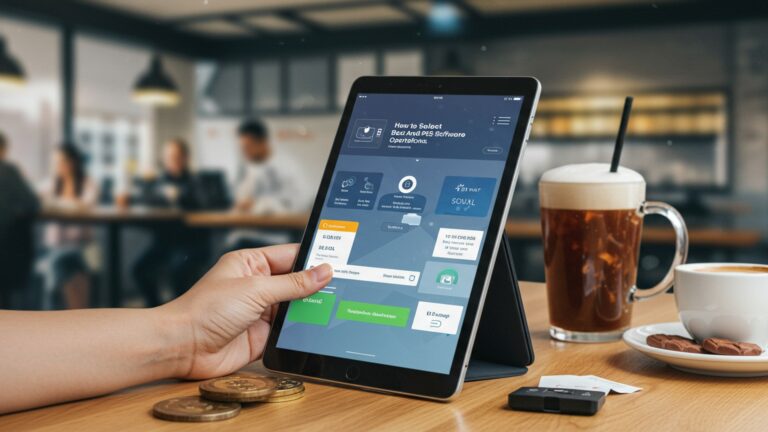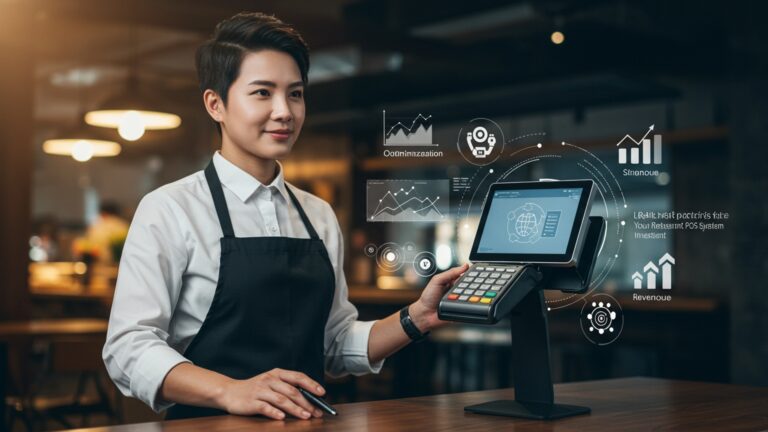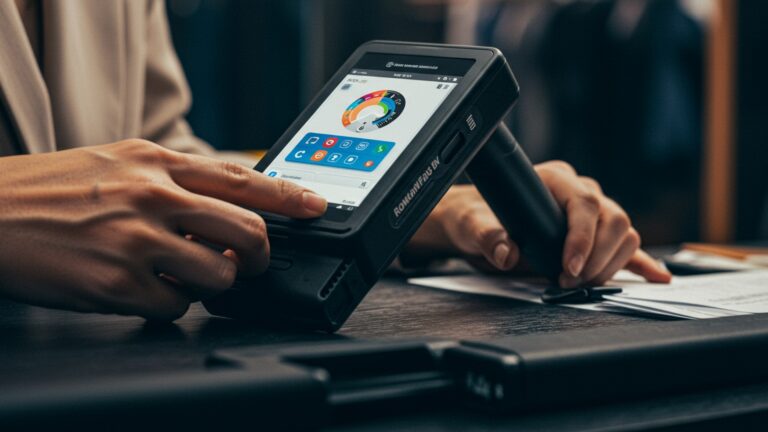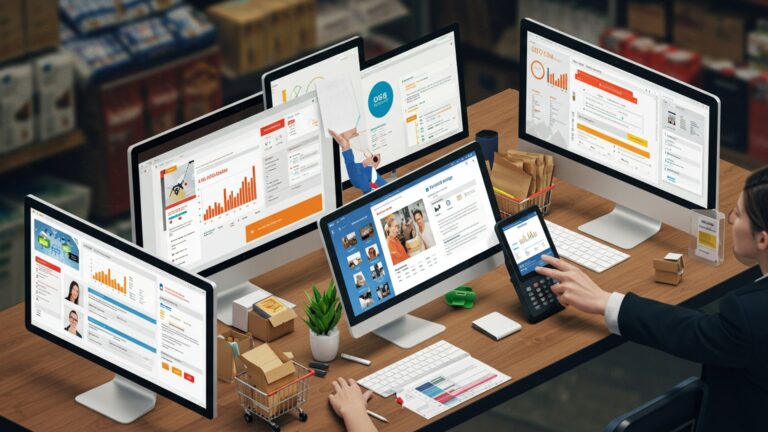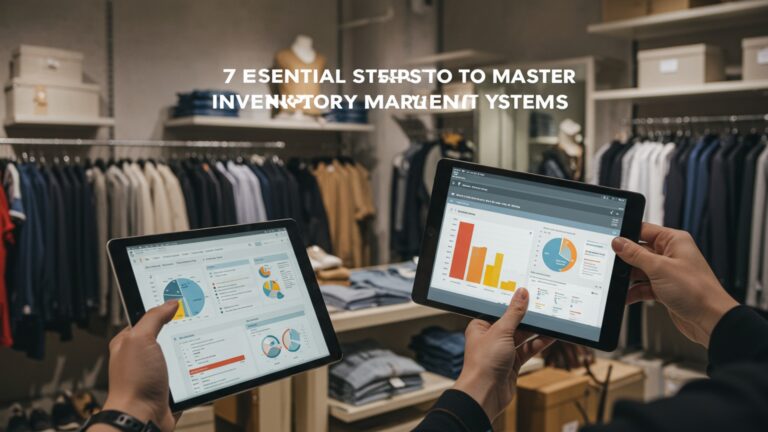Discover the 7 Best Budget POS Systems for Grocery Stores
Grocery stores operate on razor-thin margins, making every operational dollar count, especially when investing in essential technology like a Point-of-Sale system. The challenge isn’t merely finding the cheapest POS software for grocery. identifying solutions that deliver robust inventory management, seamless checkout processes. insightful sales analytics without compromising profitability. Modern cloud-based POS systems have democratized access to features previously reserved for enterprise-level budgets, offering capabilities like integrated loyalty programs and real-time stock tracking crucial for perishable goods. Savvy owners recognize that even a budget-friendly system must actively support efficient customer flow and minimize shrinkage, adapting to current trends in contactless payments and demand for streamlined operations.
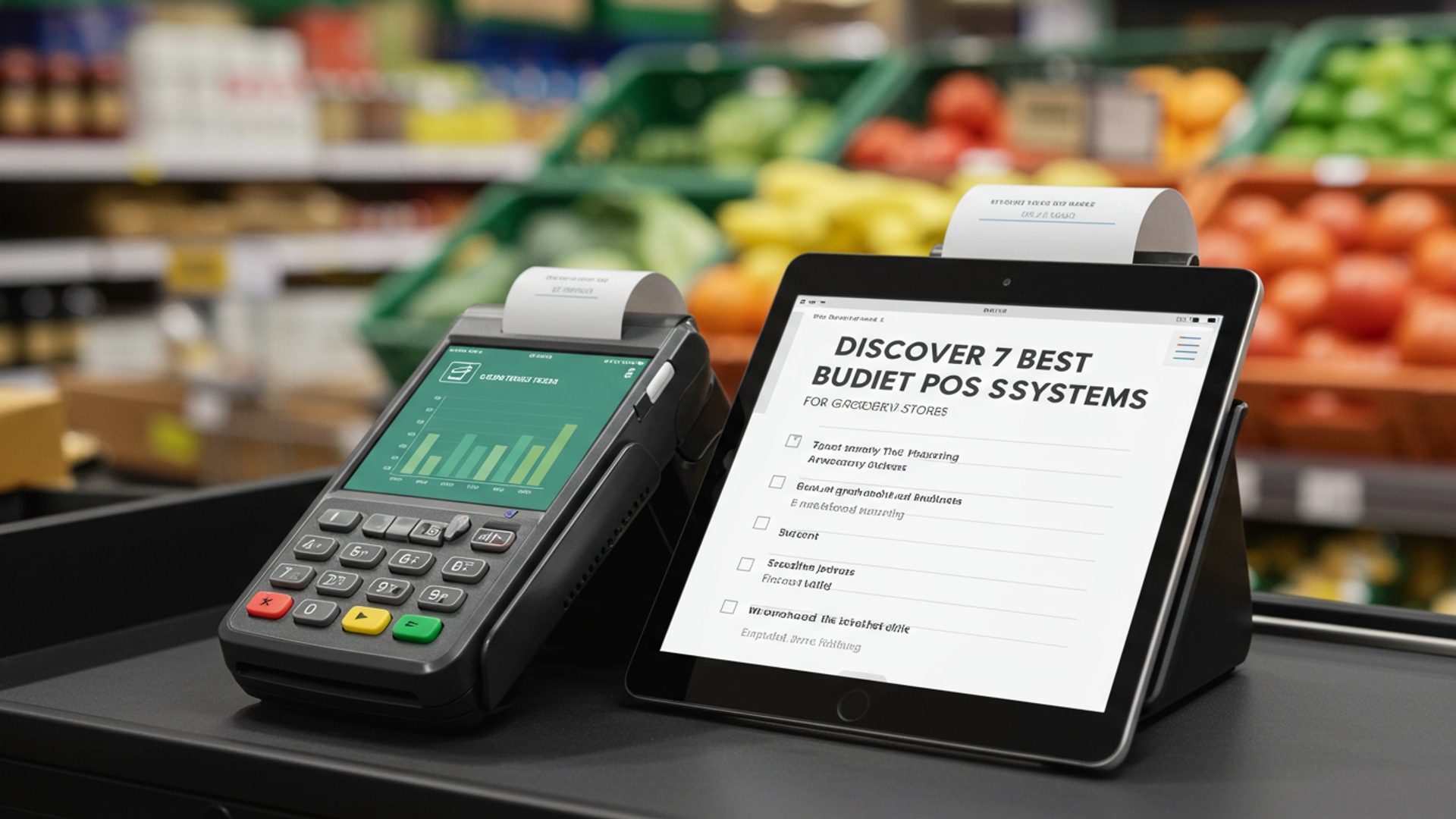
Understanding the Essence of a POS System for Grocery Operations
In the competitive landscape of retail, particularly for grocery stores, efficiency and customer experience are paramount. A Point of Sale (POS) system is no longer just a cash register; it’s the central nervous system of your business. For grocery stores, this system processes transactions. its capabilities extend far beyond that, managing inventory, tracking sales. even fostering customer loyalty. Choosing the right POS is critical. for many independent grocers and small supermarket chains, finding a budget-friendly option that doesn’t compromise on essential features is a top priority.
What exactly makes a POS system crucial for a grocery store? Consider the unique challenges:
- Perishable Inventory
- Varying Price Structures
- High Transaction Volume
- Customer Loyalty Programs
- Employee Management
Unlike many retail sectors, groceries deal with products that have expiration dates. Effective inventory management in a POS helps track expiry, minimize waste. ensure stock rotation (FIFO – First-In, First-Out).
From weighted items (produce, deli meats) to loyalty discounts, bulk pricing. promotions, a grocery POS must handle diverse pricing models effortlessly.
Grocers often process hundreds, if not thousands, of transactions daily. The POS needs to be fast, reliable. user-friendly to keep lines moving.
Building repeat business is vital. A good POS can integrate loyalty programs, tracking points, rewards. purchase history to personalize offers.
Managing shifts, tracking hours. assigning different access levels for cashiers, managers. stock personnel streamlines operations.
When we talk about “budget-friendly” or the “cheapest POS software for grocery,” we’re not just looking for the lowest price tag. We’re seeking systems that offer robust core functionalities essential for grocery operations at an accessible price point, often with scalable plans that grow with your business without breaking the bank.
Key Features to Prioritize in a Budget Grocery POS System
While cost is a significant factor, a budget POS system for your grocery store must still deliver on core functionalities to be truly valuable. Skimping on critical features can lead to operational inefficiencies and ultimately, higher costs down the line. Here are the non-negotiable features you should look for:
- Advanced Inventory Management
- Integrated Payment Processing
- Customer Relationship Management (CRM) & Loyalty
- Reporting and Analytics
- Employee Management
- Scalability and Cloud-Based Accessibility
- Hardware Compatibility
This is arguably the most critical feature for a grocery store. Look for capabilities like tracking inventory by SKU, variant management (e. g. , organic vs. conventional apples), supplier management, purchase order creation. most importantly, support for weighted items and batch tracking for perishables. The ability to set reorder points and automate purchase suggestions can significantly reduce manual effort and prevent stockouts.
Seamlessly accepting various payment methods—credit/debit cards, contactless (NFC), mobile payments (Apple Pay, Google Pay). EBT—is fundamental. Integrated processing often means lower transaction fees, fewer errors. faster checkout times.
A system that allows you to collect customer data, track purchase history. implement loyalty programs (points, discounts, special offers) can be a game-changer for retaining customers and driving repeat business.
Detailed sales reports (by item, category, employee, time of day), profit margin analysis. inventory turnover reports are vital for informed decision-making. These insights help identify best-selling products, optimize staffing. fine-tune pricing strategies.
Features like time clock functionality, shift scheduling. role-based access permissions ensure accountability and operational control. You can restrict access to sensitive functions based on an employee’s role.
A cloud-based POS offers flexibility, allowing you to access data and manage your store from anywhere. It also ensures automatic updates and often comes with lower upfront hardware costs. Scalability means the system can grow with your business, accommodating more products, more customers. potentially more locations without requiring a complete overhaul.
Consider if the software is compatible with existing hardware (scanners, receipt printers, cash drawers) or if it requires proprietary equipment. Budget-friendly options often support a wider range of off-the-shelf hardware, saving you initial investment.
When evaluating the cheapest POS software for grocery, always balance cost with these essential capabilities. A slightly higher monthly fee might be justified if it unlocks features that save you significant time or prevent substantial losses.
The 7 Best Budget POS Systems for Grocery Stores
Finding the ideal balance between functionality and cost can be challenging. several POS systems cater specifically to the needs of grocery stores without demanding a premium price. Here’s a detailed look at 7 top contenders for budget-conscious grocery owners:
Square for Retail
Square is renowned for its user-friendliness and accessibility, making it an excellent choice for small to medium-sized grocery stores. While its basic POS is free, Square for Retail offers specialized features essential for grocery businesses.
- Key Features for Groceries
- Pricing Structure
- Pros
- Cons
- Ideal Use Case
Robust inventory management with variant tracking, vendor management, purchase order creation. multi-location inventory support. It handles barcode scanning efficiently and offers a customer directory for loyalty programs. The retail-specific plan includes advanced checkout flows for faster service.
Square for Retail offers a free plan with basic features and a paid “Plus” plan (typically around $60/month per location) for more advanced inventory, reporting. team management. Transaction fees apply, usually competitive (e. g. , 2. 6% + $0. 10 for in-person transactions). Its flexible pricing makes it a strong contender for the cheapest POS software for grocery, especially for startups.
Easy to set up and use, no long-term contracts, integrated payment processing, scalable, strong inventory features, good for multi-store operations.
Transaction fees can add up for high-volume stores; advanced features are locked behind the paid plan.
Small to medium-sized grocery stores, specialty food shops. organic markets looking for an intuitive, all-in-one system with strong inventory controls.
Real-world example: “After struggling with a clunky old system, we switched our small organic grocery to Square for Retail. The inventory tracking alone saved us hours each week, especially with our diverse produce selection. It was a learning curve. the intuitive interface meant our staff picked it up quickly. the cost was perfectly aligned with our budget,” says Maria, owner of ‘Green Sprouts Market’.
Lightspeed Retail
Lightspeed Retail is a powerful cloud-based POS system known for its comprehensive inventory management and robust reporting, making it suitable for growing grocery businesses that require more depth in their operations.
- Key Features for Groceries
- Pricing Structure
- Pros
- Cons
- Ideal Use Case
Exceptional inventory management including vendor catalogs, serial number tracking (if applicable for certain products), product variants. detailed product matrices. It supports purchase orders, returns. exchanges seamlessly. Customer profiles and loyalty programs are also strong, alongside detailed sales analytics.
Lightspeed offers tiered pricing starting from a “Lean” plan (around $89/month when billed annually) which includes core POS and inventory features. Higher tiers offer more advanced analytics and e-commerce integration. While not the absolute cheapest upfront, its feature set offers significant value for the price, making it a budget-smart choice for comprehensive needs.
Very strong inventory management, powerful reporting, excellent for multi-store setups, good customer support.
Can have a steeper learning curve than simpler systems, potentially higher monthly fees than some entry-level options.
Mid-sized grocery stores, specialty food retailers. gourmet markets that need sophisticated inventory tracking and comprehensive business insights.
Clover
Clover offers a highly flexible and customizable POS system, known for its sleek hardware and app-based ecosystem, allowing grocery owners to tailor their system to exact needs.
- Key Features for Groceries
- Pricing Structure
- Pros
- Cons
- Ideal Use Case
Its app market allows integration with specific grocery apps for inventory, weighted items. loyalty. Core features include robust payment processing, employee management. sales reporting. Hardware options range from portable devices to full-fledged countertop systems, providing flexibility for different store layouts.
Clover’s pricing can vary significantly based on hardware choice and processing rates, which are often negotiated. Software plans typically start from around $14. 95/month for basic processing, with more comprehensive plans (e. g. , “Register” for around $49. 95/month) offering inventory and employee management. This modular approach can make it a very budget-friendly option if you select only the apps you need.
Highly customizable with an extensive app market, modern hardware, excellent payment processing, scalable.
Can become expensive if many apps are added; payment processing rates can vary based on merchant services provider.
Grocery stores looking for a modern, modular system that can be customized with specific apps, or those who appreciate stylish, integrated hardware.
Epos Now
Epos Now is a globally recognized POS system that provides industry-specific solutions, including strong offerings for retail and grocery. It’s known for its user-friendly interface and comprehensive features at a competitive price point.
- Key Features for Groceries
- Pricing Structure
- Pros
- Cons
- Ideal Use Case
Excellent inventory management with detailed product tracking, stock alerts. supplier management. It facilitates quick sales processing with barcode scanning, custom discounts. supports customer accounts for loyalty. Reporting is robust, offering insights into sales performance, employee productivity. inventory turnover.
Epos Now offers a clear pricing model, typically starting with a software-only plan around $39/month (billed annually) for its “Standard” package, which includes core POS and inventory features. They also offer bundles that include hardware. This straightforward pricing makes it a contender for the cheapest POS software for grocery, especially for those seeking a dedicated retail system.
User-friendly interface, comprehensive inventory features, strong reporting, 24/7 customer support, cloud-based.
Some advanced features or integrations may require higher-tier plans or additional add-ons.
Small to medium-sized grocery stores and convenience stores seeking a dedicated, easy-to-use retail POS with good support.
Loyverse POS
Loyverse is a popular choice for small businesses due to its compelling free plan, offering significant functionality without a monthly subscription fee, making it incredibly attractive for those on a tight budget.
- Key Features for Groceries
- Pricing Structure
- Pros
- Cons
- Ideal Use Case
The free plan includes inventory management (item tracking, low stock alerts), sales reporting, employee management. even a basic customer loyalty program. It supports barcode scanning and can handle various payment methods via integrated processors. Optional paid add-ons expand its capabilities, such as advanced inventory or employee management.
Loyverse’s core POS, inventory, sales. employee management are free. Paid add-ons (e. g. , advanced inventory, integrations) are available at modest monthly fees (e. g. , $25/month for Advanced Inventory). This makes it arguably the cheapest POS software for grocery if your needs align with its free offerings.
Free core features, easy to set up and use on tablets/smartphones, good for very small stores or startups, cloud-based.
Free version might lack some depth for larger grocery operations; customer support can be limited compared to paid services.
Very small grocery stores, pop-up markets, or specialty food vendors with limited budget and relatively straightforward inventory needs.
Case Study Snippet: “When we opened our small urban market, budget was our biggest concern. Loyverse’s free POS was a lifesaver. It handled our produce and packaged goods inventory. the sales reports gave us just enough insight to start. As we grew, we invested in their paid add-ons for more detailed inventory. the free start was invaluable,” shares Ben, co-owner of ‘City Pantry’.
Shopify POS
While primarily known for e-commerce, Shopify POS offers a robust solution for brick-and-mortar retailers, including grocery stores, especially those looking to integrate their online and in-store sales channels.
- Key Features for Groceries
- Pricing Structure
- Pros
- Cons
- Ideal Use Case
Excellent unified inventory management across online and physical stores. It supports barcode scanning, product variants. detailed customer profiles. Its reporting is strong. it integrates well with a vast app ecosystem that can extend functionality for specific grocery needs (e. g. , weighing scales, advanced loyalty).
Requires a Shopify e-commerce plan (starting around $29/month for Basic Shopify), plus the POS app. Shopify POS Lite is included with all plans, while Shopify POS Pro (around $89/month per location) offers advanced features like unlimited staff, smart inventory management. in-store analytics. Transaction fees apply unless you use Shopify Payments.
Seamless integration with e-commerce, powerful inventory sync, vast app store, good for businesses planning online sales.
Requires a Shopify e-commerce subscription, which might be an unnecessary cost if you don’t sell online; can become more expensive with the Pro plan and additional apps.
Grocery stores that want to sell online (e-commerce, local delivery, curbside pickup) in addition to their physical store, needing a unified platform.
SumUp POS
SumUp, initially known for its mobile card readers, has expanded into full POS solutions, offering a straightforward and cost-effective system, particularly appealing to smaller retailers and those seeking simple, reliable functionality.
- Key Features for Groceries
- Pricing Structure
- Pros
- Cons
- Ideal Use Case
SumUp POS offers intuitive product management, sales tracking. basic inventory control. It integrates seamlessly with SumUp’s payment processing hardware, providing a cohesive checkout experience. The system focuses on ease of use and quick setup, making it ideal for busy grocery environments where simplicity is key.
SumUp’s POS typically involves a one-time purchase of their hardware (e. g. , POS Lite bundle) combined with their competitive transaction fees (e. g. , 1. 69% for in-person transactions) and often no monthly software fees for basic functionality. This can make it a very attractive budget option, particularly if you prioritize low ongoing costs over extensive advanced features.
Very competitive transaction fees, no monthly software fees for basic use, easy to set up, good for smaller operations.
Less robust in terms of advanced inventory or CRM features compared to more comprehensive systems; primarily focused on payment processing integration.
Small convenience stores, fruit and vegetable stands, or specialized food kiosks looking for an ultra-budget-friendly POS with integrated payment processing and minimal overhead.
Comparative Analysis of Budget Grocery POS Systems
To help you weigh your options for the cheapest POS software for grocery, here’s a comparative table summarizing the key aspects of the systems discussed:
| POS System | Starting Monthly Cost (Software Only, Approx.) | Key Grocery Feature Highlights | Best For | Grocery Suitability Note |
|---|---|---|---|---|
| Square for Retail | $0 (basic) / $60 (Plus) | Robust inventory, vendor management, multi-location, customer directory. | Small-to-mid grocers, specialty food shops. | Excellent balance of features and affordability, scalable for growth. |
| Lightspeed Retail | $89 (Lean, billed annually) | Advanced inventory (variants, POs), detailed reporting, multi-store. | Mid-sized grocers, gourmet markets. | Comprehensive inventory depth for diverse product ranges. |
| Clover | $14. 95 (basic processing) / $49. 95 (Register) | Customizable via app market, flexible hardware, strong payments. | Grocers needing modularity and modern hardware. | Adaptable to specific needs through apps, good for unique setups. |
| Epos Now | $39 (Standard, billed annually) | User-friendly inventory, quick sales, strong reporting, 24/7 support. | Small-to-mid convenience/grocery stores. | Dedicated retail solution, straightforward pricing, good support. |
| Loyverse POS | $0 (core features) / $25 (Advanced Inventory add-on) | Free core inventory, sales, employee management, basic loyalty. | Very small grocers, startups, mobile vendors. | Extremely budget-friendly entry point, expandable with paid add-ons. |
| Shopify POS | $29 (Basic Shopify plan) + POS app | Unified inventory (online/offline), vast app store, e-commerce integration. | Grocers with online sales or future e-commerce plans. | Ideal for hybrid models, robust platform for growth. |
| SumUp POS | $0 (software for basic) + hardware purchase | Simple product management, integrated payments, easy setup. | Small convenience stores, produce stands, kiosks. | Ultra-budget-friendly with low transaction fees, simple operation. |
Choosing the Right System: Actionable Takeaways for Your Grocery Store
Selecting the cheapest POS software for grocery that truly fits your business involves more than just looking at the price tag. It requires a thoughtful assessment of your specific needs, growth trajectory. operational style. Here’s a structured approach to making an informed decision:
- Assess Your Current Needs & Future Goals
- Inventory Complexity
- Transaction Volume
- Staff Management
- Customer Engagement
- E-commerce Integration
- Growth Potential
- Prioritize Essential Features vs. Nice-to-Haves
- Trial and Test
- Set up your actual product list, including weighted items if applicable.
- Run simulated transactions, including returns and discounts.
- Test the inventory management features: how easy is it to add new stock, track spoilage, or generate purchase orders?
- Have your staff test the system for ease of use and speed.
- Consider Hardware Requirements
- Do you have existing barcode scanners, receipt printers, or cash drawers that you want to reuse?
- Does the POS system run on affordable, off-the-shelf tablets (iPad, Android) or require proprietary hardware? Proprietary hardware can sometimes be more expensive upfront but might offer tighter integration.
- Scrutinize All Costs
- Transaction Processing Fees
- Hardware Costs
- Add-on Fees
- Support Costs
- Installation/Setup Fees
- Evaluate Customer Support
- Read Reviews and Seek Peer Advice
Do you sell weighted items, perishables, products with variants (e. g. , different sizes/flavors), or items requiring batch tracking?
How many transactions do you process daily? This impacts the need for speed and robust payment processing.
Do you need detailed time tracking, shift scheduling, or advanced role-based permissions?
Is a loyalty program, customer database, or targeted marketing essential for your business?
Are you selling online now, or do you plan to in the future? A unified system can save immense effort.
How many products, staff, or locations do you anticipate having in 1-3 years? Choose a system that can scale.
Make a list of absolute must-have features (e. g. , inventory tracking for perishables, fast checkout) and a separate list of desirable but not critical features (e. g. , advanced analytics, specific third-party integrations). Focus your budget on the essentials first.
Most reputable POS providers offer free trials or demos. Take advantage of these!
Beyond the monthly software fee, consider:
These can significantly impact your overall cost. Compare rates carefully, especially for in-person vs. online transactions.
Initial investment for terminals, scanners, printers.
For additional features (e. g. , advanced inventory, extra user accounts) or third-party integrations.
Is 24/7 support included, or is it an extra charge?
Some providers charge for initial setup or training.
Even the most intuitive system can present challenges. Reliable and responsive customer support is invaluable. Look for providers offering multiple channels (phone, email, chat) and reasonable hours of operation. Read reviews about their support quality.
Look for reviews from other grocery store owners. Platforms like Capterra, G2. Software Advice offer user reviews and comparisons. Don’t hesitate to reach out to local grocers for their recommendations and experiences.
By following these steps, you can confidently navigate the options and discover a budget-friendly POS system that not only manages your grocery operations effectively but also sets you up for future success without overspending. The goal isn’t just to find the cheapest POS software for grocery. the one that offers the best value and functionality for your unique business.
Conclusion
Navigating the options for a budget-friendly POS might seem daunting for a grocery store owner. as we’ve explored, robust inventory management, speedy checkouts. integrated reporting are no longer exclusive to high-end solutions. The key takeaway is to critically evaluate which system genuinely meets your specific needs, particularly concerning fresh produce tracking and diverse payment processing, without compromising on efficiency. My personal tip? Always prioritize a system that offers intuitive inventory control for your perishable goods and seamless integration with payment processors. I’ve witnessed firsthand how a streamlined checkout, like one with quick barcode scanning for produce, significantly reduces customer wait times, especially during peak hours. Remember, even a budget system should be scalable; think about future expansions or new product lines. In today’s fast-paced retail landscape, where quick supply chain adjustments and a smooth customer journey are paramount, selecting a system that offers even basic API access or robust reporting for sales trends is invaluable. It’s about leveraging technology to respond to market shifts, like the recent surge in local produce demand. Ultimately, your choice is an investment in time, accuracy. customer satisfaction. Take that informed leap; a well-chosen budget POS isn’t just a tool, it’s the backbone of a thriving grocery business.
More Articles
How to Choose the Right POS Software for Your Retail Business Guide
How to Select the Best POS Software in India A Comprehensive Guide
How to Choose and Implement Cloud Based POS Software for Your Business
Learn How to Master POS Billing Software for Faster Sales and Efficiency
FAQs
Why do grocery stores even need a budget POS system?
Grocery stores, especially smaller ones or those just starting out, need to keep costs down while still running efficiently. A budget POS helps them manage sales, inventory. customer transactions without breaking the bank, improving operations and profitability right from the start.
What exactly makes a POS system ‘budget-friendly’ for a grocery store?
It usually means a lower monthly subscription fee, affordable hardware options. features that are essential for grocery operations without a lot of expensive extras you might not need. Think cost-effective processing, basic inventory. quick checkout capabilities.
Are these cheaper POS systems actually reliable enough for busy grocery environments?
Absolutely! Many budget-friendly POS systems are designed to be robust and handle the fast pace of a grocery store. While they might skip some advanced features, they excel at core tasks like speedy checkouts, accurate pricing. basic inventory tracking, which are crucial for daily operations.
What are the must-have features I should look for in a budget grocery POS?
Key features include quick barcode scanning, inventory management (especially for variable weight items), customer checkout with various payment options, employee management. basic reporting to track sales. Integrations for scales and receipt printers are also very helpful.
Can these budget systems handle complex inventory, like fresh produce and packaged goods?
Yes, the best budget systems for groceries are capable of managing both. They typically support inventory tracking by unit, weight. even expiration dates. This allows you to accurately track everything from a bag of chips to fresh apples sold by the pound.
How easy is it to get one of these budget POS systems up and running in my store?
Most budget-friendly POS systems are designed with ease of use in mind. Many offer cloud-based setups, meaning less complex installation. You can often get basic functions going pretty quickly. they usually have intuitive interfaces that don’t require extensive training for staff.
Will a budget POS help me with customer loyalty programs or promotions?
Many budget POS systems do include basic features for customer management, allowing you to track purchases and implement simple loyalty programs or discount promotions. While they might not have the most advanced CRM tools, they often provide enough functionality to start building customer relationships.


